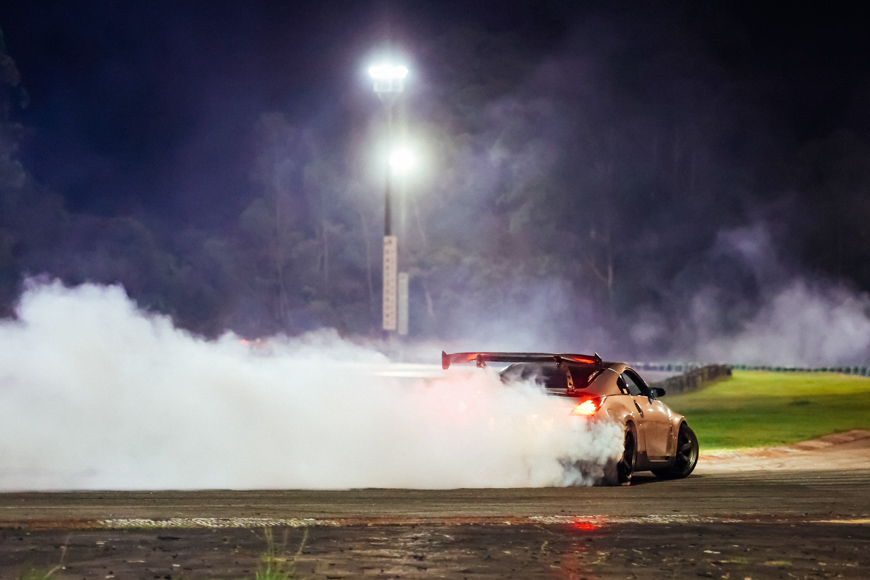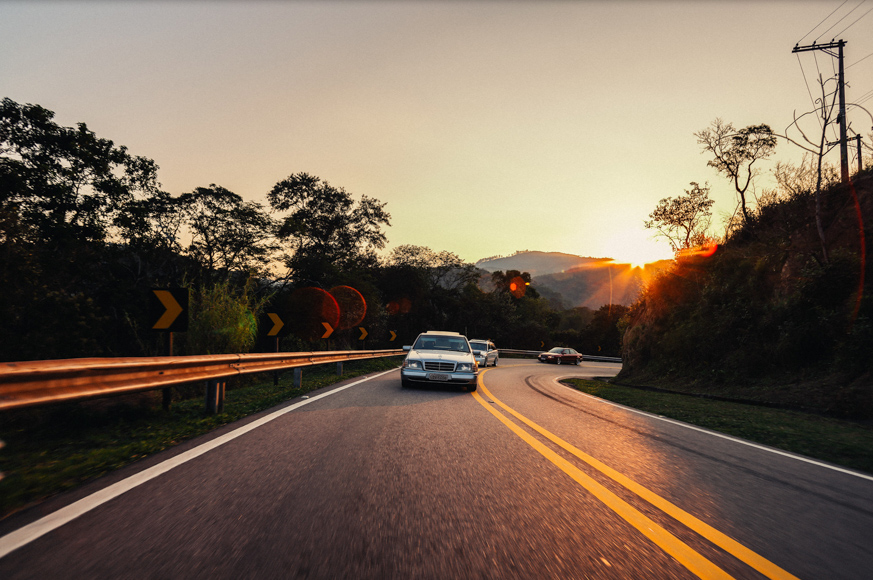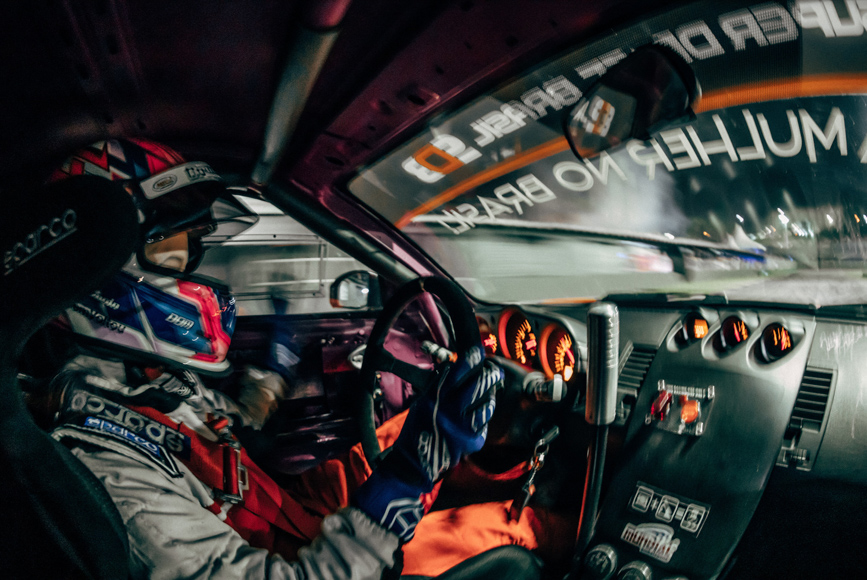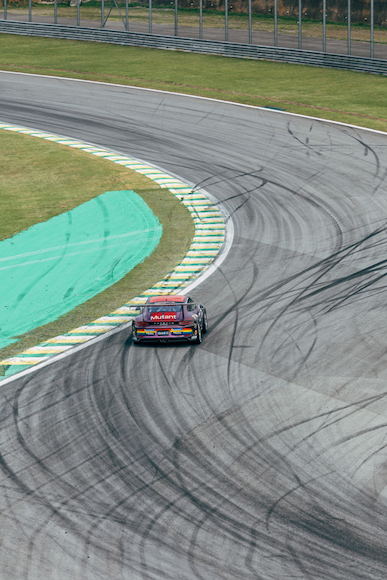






Bruno Massao
Automobile | Last Updated: November 21, 2022
My name’s Bruno Massao, a photographer and filmmaker based in Sao Paolo, Brazil. I am the head of the production for a company called Scream Audiovisual.
Most of my work is focused on motorsports content, having worked for Mitsubishi Cup, Porsche Cup Brasil, and Super Drift Brasil, where I am usually in charge of the cinematography of interviews for drivers and personnel.
Aside from that, I’m also a technical supervisor for the camera department of Armada Rental; a Brazilian rental company focused on cinema productions.
In this role, I deal with camera gear on a daily basis, either for future investments in the rental facility or to help customers decide what is best for their production.
My gear is always evolving, and since I’m mostly filming nowadays, I’ve had to change my setup a little bit in the past few years. I still have a stills kit, but for the sake of this publication, I’ve decided to showcase my filmmaking kit for smaller projects.
Cameras
Canon EOS R5 C – When the R5 C was announced, I was immediately on board. I have tested the R5, and while it is a brilliant camera for photos, there were some drawbacks that were a problem for me personally.
The lack of codec options, no optional XLR inputs for audio, no control over project frame rate while shooting slow motion, and the unpredictability of overheating.
All these disadvantages were solved on the R5 C. This camera will be my main camera for hybrid projects for a long time to come since it can record 8K – if the need ever arrives in the future.
The image out of this camera is gorgeous, with the only downside being battery life, with each LP-E6NH lasting around forty minutes in video mode.
So if you’re like me and want to have the smallest footprint possible, you’ll have to get a load of batteries for each shoot.
I’ve paired it with the Tilta cage because it’s the one that gives me the most flexibility without affecting the ergonomics if I have to shoot stills.
Canon EOS R7 – I’ve been using the EOS R7 since its launch as a backup B camera for the R5 C. The 4K Fine, which oversamples from the 7K capture, is great, and it matches perfectly with the footage from the R5 C.
I even get myself using it as an A camera sometimes if the project allows it. In comparison with the R5 C, the battery power lasts a lot longer, so I’ve been using my older LP-E6N batteries, and usually, two batteries can carry me through a full shoot.
For stills, it’s a thirty-two-megapixel APS-C sensor, and it’s a speed beast for continuous shooting. I can see a lot of sports photographers carrying this camera as a second body for their R3 and 1DX.
Konica Hexar RF – This was my dream camera for a long time, and when the opportunity arrived, I had to get hold of one. It’s a 35mm film rangefinder released back in 1999, which has its own mount (KM).
This mount is a copy of the Leica M mount, so I can use the lenses from the Leica M system without any compromises.
Contax TVS – This is my newest old camera. It is a compact 35mm film camera released in 1994. Its name, as some of you might have guessed, links it to their more well-known sister, the Contax T.
In fact, the Contax TVS is a variant of the Contax T2 camera, with its name drawn from its lens, the Vario-Sonnar T* 28-56mm f/3.5-6.5. It is made of titanium, and I’ve been carrying it around to shoot stuff from behind the scenes and during my free time when I’m traveling for work.
Samsung Galaxy S22 – Yep, you didn’t read it wrong. While I don’t normally shoot with my phone, I’m always using it on technical scouts prior to some bigger jobs, sometimes on a gimbal to preview a camera movement.
The camera on the S22 is great, and it has native pro-level controls even for videos, so it’s a breeze to use it for this task.
Lenses
Now, lenses are my bread and butter. While I love camera technology as much as any other guy, I’ve always been in love with lenses. I have a number of lenses, some of which may even sound redundant, but each and every one of them has a purpose in my kit.
Canon RF 28-70mm f/2L USM – This is my go-to all-around lens for ninety percent of my workflow. Being a zoom lens with a fast aperture, I can easily put it on any of my cameras and use it to frame my interview with the talent in the frame and the Eye-Detection AF on.
Both the R5 C and R7 work really well with this lens. It’s fast, it’s sharp, it’s rugged, and it’s one hell of a lens.
Canon RF 16mm f/2.8 STM – This is an inexpensive full-frame ultra-wide-angle lens that I carry around for those wide shots for b-rolls. I usually don’t get any wider than 28mm for the type of jobs that I’m into, so getting the 16mm f/2.8 was a no-brainer.
It’s ultra-wide in full frame, and if the necessity arrives, I can always crop to Super 35mm on the R5 C and have it have the FOV of 24mm and still shoot 4K.
Canon RF 85mm f/2 Macro IS STM – I mostly use this lens for a b-roll. It has image stabilization and macro with 1:2 magnification capabilities. So while it’s not a full-on 1:1 magnification macro lens, it’s great for the sort of work that I do, and the IS works great for those handheld shots.
I also usually pair the R7 with this lens while the R5 C is set up on a tripod, fixed within a frame. This allows me to have some handheld shots at the same time.
TTArtisan 25mm f/2 – This is a really, really cheap wide-angle lens for APS-C and Super 35mm cameras. They’ve recently launched it for around fifty-five dollars, and it’s so small and lightweight.
This lens is far from perfectly optical, but it’s great for pairing with the R7 when I want to get some footage with more ambiance to the framing.
7Artisans Spectrum 50mm T2 and 7Artisans Spectrum 85mm T2 – I’m including both lenses in the same part because it is easier to explain. When we talk about cine lenses, there is much to be considered, from image quality to build quality, mount options, and sensor size coverage.
So, when I was searching for a cheap kit to pair with my RF cameras, I saw these lenses and was intrigued. They were so cheap that I could afford to buy and test them for myself.
They are amazing full-frame lenses. This pair was a shot in the dark but a really great addition to my setup. They are consistent, both in terms of gear markings and optical rendition, they add a great character to the image, and they are sharp without looking that perfect.
Great lenses for the pricing!
The only problem with this set is that they don’t offer the 35mm with RF mount, but hey – if I ever switch systems at one point, I’m most definitely taking these lenses as well.
7Artisans 50mm f/1.1 – This was my second lens from 7Artisans, which I bought back in 2018. I was looking for a fast 50mm to use with my Hexar RF and couldn’t find either the Hexanon 50mm f/1.2 or the Voigtländer Nokton 50mm f/1.2, and I could not afford the Leica Noctilux at the time, so I was looking for options.
Enter 7Artisans, which at the time was an unknown Chinese lens manufacturer, with this brand new lens that everybody was skeptical about.
This lens has a ton of character, and it’s far from what we would consider perfect as far as sharpness and chromatic aberration go. Since I went to a full mirrorless setup later in that year, I have now got a couple of adapters that allow me to use these LM mount lenses on my R5 C and R7 as well.
Voigtländer Super Heliar-Wide 15mm f/4.5 III – This is, by far, the best ultra-wide-angle lens that I’ve ever used for a rangefinder system. I found it used at a photography store (Portssar, Sao Paolo) for a great price with the external viewfinder included, and the lens was in perfect condition.
The previous owner bought the LM version on an international trip, unaware that it wouldn’t fit his Sony camera without an adapter; he sold it so he could grab the E-mount version – lucky me!
This version was corrected in many aspects for digital sensors, especially on the corners of the image, while the previous versions were definitely better to be used on film cameras.
Voigtländer Nokton 35mm f/1.2 – This was my very first Voigtländer lens. I bought it to use with my Leica CL, which was my rangefinder camera at the time, so I could have a low-light 35mm setup to shoot at night.
It didn’t make much sense until I got the Hexar RF, and now the lens really shines on that camera. It’s sharp, it’s fast, and it has beautiful bokeh.
It does show a little bit of chromatic aberration when used on a digital camera because it is an older lens. I am intrigued to see if the newest version solves all these problems.
Voigtländer Nokton 50mm f/1.1 – Remember when I said I was looking for a fast 50mm lens when I bought the 7Artisans 50mm f/1.1? Well, last year, I was hanging out with my friends at Portssar (the same photography store where I bought the Super Heliar-Wide), and this lens happened to be on display in the used section.
After a quick research, I discovered it was a 2009 release from Voigtländer, with a really soft look on the corners and sharper than Noctilux f/1 in the center of the image, which is something that I really dig. Although it’s a 50mm and also f/1.1, it’s a completely different lens than the 7Artisans offering.
I don’t often carry lights to every shoot, so I didn’t include them in my gear shot. Sometimes when more powerful lights are required, we just end up renting them.
I have a couple of Amaran 60D LED lights, which are smaller and faster to set up, and they can be powered by NP-F batteries. I also have a couple of Aputure MC LED lights for emergencies where I need fill lightning.
Nanuk 935 WaterproofCase – This is my main hard case, it’s TSA approved for carry-on, and it’s a great case if you don’t want to buy a Pelican Air 1535.
My case has the padded insert where I carry the main camera body (Canon R5 C) with the RF lens, a smaller shotgun mic, and a monitor. I also carry the Hexar RF with the LM lenses in this area, with the lens adapters.
In the lid of the case, I’ve got the lid organizer from A-MoDe, where I put batteries and chargers for the cameras and monitor, a cleaning kit, HDMI cables, and films.
Lowepro Protactic 450AW II – this is the backpack that I carry with me, and inside it goes the second camera body (Canon R7) with the TTArtisan 25mm f/2 and the 7Artisans Spectrum cine lenses.
I also carry my Contax TVS for quick moments and a few other accessories: my Tilta Mini Follow Focus FF-07 setup, my Macbook, a card reader, a couple of external SSD, and another cleaning kit.
I try to keep it with some free space in case I need to dispatch my hard case. If this happens, I transfer all the batteries from the hard case to the backpack.
iFootage Gazelle TC7 with Komodo K5 – This has been my tripod for the past eighteen months. It was a great pick due to its fast bow design and the fact that it is so sturdy and lightweight.
I can detach the head from the legs effortlessly, making it really fast to go from a fixed to a handheld setup. When I am on-site, there can be loads of walking around to access teams and drivers, and it is so easy to carry around.
A shout-out to my friend at I9Store, who managed to hook me up with this tripod for a great price!
Zhiyun Smooth X Gimbal – I always carry this with me for scouting. It was a great price at thirty dollars, and its small size makes it a great option for smartphones. It’s really easy to set up and works fine for movement marking on technical scouting missions.
MacBook Air M2 – This is my new laptop, which I use to log all the photos and video footage at the end of the day. I also use it to edit a quick turnaround video for social media if the client requests. It’s fast and reliable for this type of work.
Adobe Creative Cloud package – I mostly use Adobe for my edits, with Premiere CC being the main software for video editing and Lightroom Classic for photos. I usually relay all of the editing work to my associates.
SmallHD Indie 7 Smart Touchscreen – This is my monitor for framing, focusing, and exposure that I use on-camera. I have always liked SmallHD, as they are rugged and have great operating software. I am also considering the new Indie 5 due to its smaller size.
Sennheiser MKE200 – This is the smallest shotgun mic that I have been able to find. It’s a quality mic for scratch audio and handy for vlog-style fast interviews.
Tilta Mini Follow Focus FF-07 – This is the smallest manual follow focus system for solo operation. It can fit inside my backpack, and I use it with the 7Artisans Spectrum lenses in order to make it easier to find focus.
Nitecore BlowerBaby – I have always found air blowers to be a little janky, but this is a great one. It’s not exactly small, but it’s battery-powered, and it’s rugged, so I can throw it inside my hard case or backpack and don’t have to worry.
I also have the CMOS Air Filter if I ever need to remove some dust from the camera sensor.
Nitecore Camera Cleaning Pen – This is the cleaning pen kit for the Nitecore system. It has a storage compartment with some brush tips that you can attach to the BlowerBaby. It is great for cleaning the camera body and lenses, especially if you have to deal with dust on a regular basis.
Baseus PD3.1 140W Multi Ports GaN Fast Charger – This is the fast charger that I use on the R5 C or the R7 if I ever need to leave the camera powered on for multiple hours. I can also use it for my laptop or other devices if needed.
By the way, I always carry a stainless steel water bottle as it is so important to drink water!
As far as motorsports go, mobility is king. Being able to travel with just the essentials to complete your work is crucial.
Although it’s hard work with all the travel, I love it and have made many friends along the way.

Check out these 8 essential tools to help you succeed as a professional photographer.
Includes limited-time discounts.












